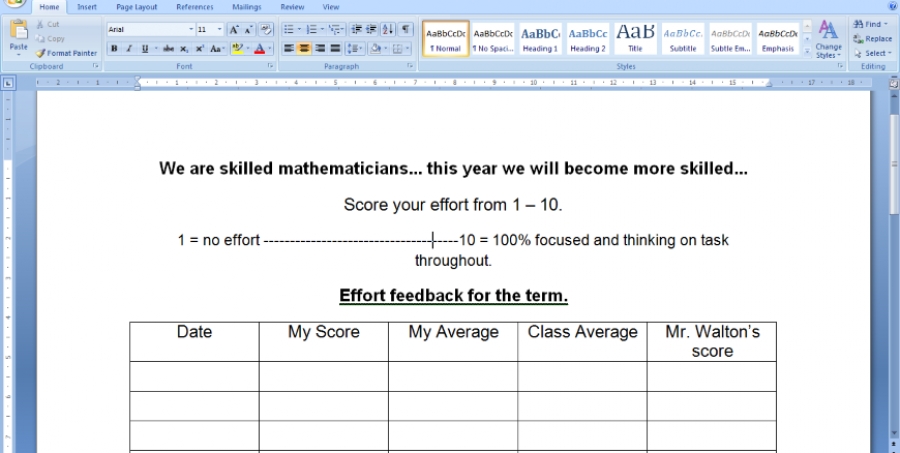We have found outcomes have been that children have been honest with their engagement and therefore have increased the effort and application during lessons. Teaching can be adapted and feedback from children can benefit future lessons and learning by allowing them the input and control over how the learning is delivered.
2. Self-evaluation – next steps to success!
Giving the children the role of choosing the ‘Next Steps’ in their learning is a powerful tool in ensuring they feel part of the learning process and engaging them in it. Examples can be found both inside and outside the classroom. You can give children control over their learning in a wide range of methods. From the formal use of Success Criteria in the classroom to children choosing the training drills to run on the sports field on reflection of what they need to improve upon from their last fixture.
You can also give children control the development of a topic through ongoing evaluation of learning being undertaken. The teacher can gather information on what the children want to learn more about, and how to provide learning opportunities for them to do so. A flexible and confident attitude is required here by the teacher, with clear guidelines agreed by all to ensure that the learning follows a structure that benefits all and ensures an end result the child can be truly proud of.
The danger of children ‘dumbing down’ their learning by taking the easy route is taken away from them by the structure on developing best practice in a collaborative manner. At our school we represent this through our ‘Purple Octopus’, which has enough arms to explore and grab opportunities, as well as holding onto the zip-line that leads them through school and moves them towards their goals. The safety net is always there and you are encouraged to go out and grab the opportunities around you.

3. TED - Think! Explore! Design!
At the end of every term the children are given a topic they can complete some research on away from school, to their own level of interest and ability. We use ‘TEDs’ instead of hours of mind-numbing worksheets, allowing children to develop their skills at completing research projects.

Beyond the topic title, which is used as a general theme and starting point, the children can complete the TED in whichever way they wish. The TEDs are not graded, but positive comments on the effort and thinking that has gone on help children develop their style of recording and research skills. From QR codes that link to websites, to simple pages with no words and information communicated through a single pencil and page, the children have total control over their learning and input into the task. The results have been amazing.
It has taken time to ensure the parents understand that it is not their ‘project’ but their children’s, and that we will accept whatever results they give to us. The pride and learning shines through and grows each time. Learning is improved as the children develop skills and techniques they can use time and time again in the classroom and beyond. All TEDs are shared, and children have opportunities to say positive things about each one, which helps them gather a broad range of experiences from their peers.
4. Giving them a time to think and verbalise their thinking!

To help improve children develop thinking skills which will help them take control in real life situations and contexts away from school, we build their ability to arrange questions and possible solutions. We do this in every lesson through higher-order questioning and open-ended questions in the form of ‘Thunks’.
A Thunk is a beguilingly simple-looking question about everyday things that stops you in your tracks and helps you start to look at the world in a whole new light. They help develop thinking skills and imagination which children can use in other areas of their lives and learning.
This allows children to have the skills to take control when they need to develop their learning and understanding of different situations both in and out of the classroom. Inside the classroom we have found children are approaching how they complete a task. This goes along with setting open-ended questions and allowing the children time to work on them with the teacher supporting learning by structuring the process at times, but not directly leading learning.
5. Mastering the techniques to share learning and feedback to others.
Getting children to verbalise their thinking and learning is key to helping them become confident in the processes and methods they are using in their learning. Using this alongside the open-ended thinking they use to complete a task benefits and adds value to the time spent tackling a task. The child becoming the ‘teacher’ or person in control of the thinking and learning process in a group, allowing deeper learning and understanding to take place. Quickly children grow in confidence to challenge thinking and (more importantly) adapt their thinking to help them best solve a task.

I hope you find these five tips to improve teaching and learning useful and give them a go. Letting children lead can be a revelation – for both teacher and pupil.
Do you give pupils control over the lesson? Let us know in the comments below!


















